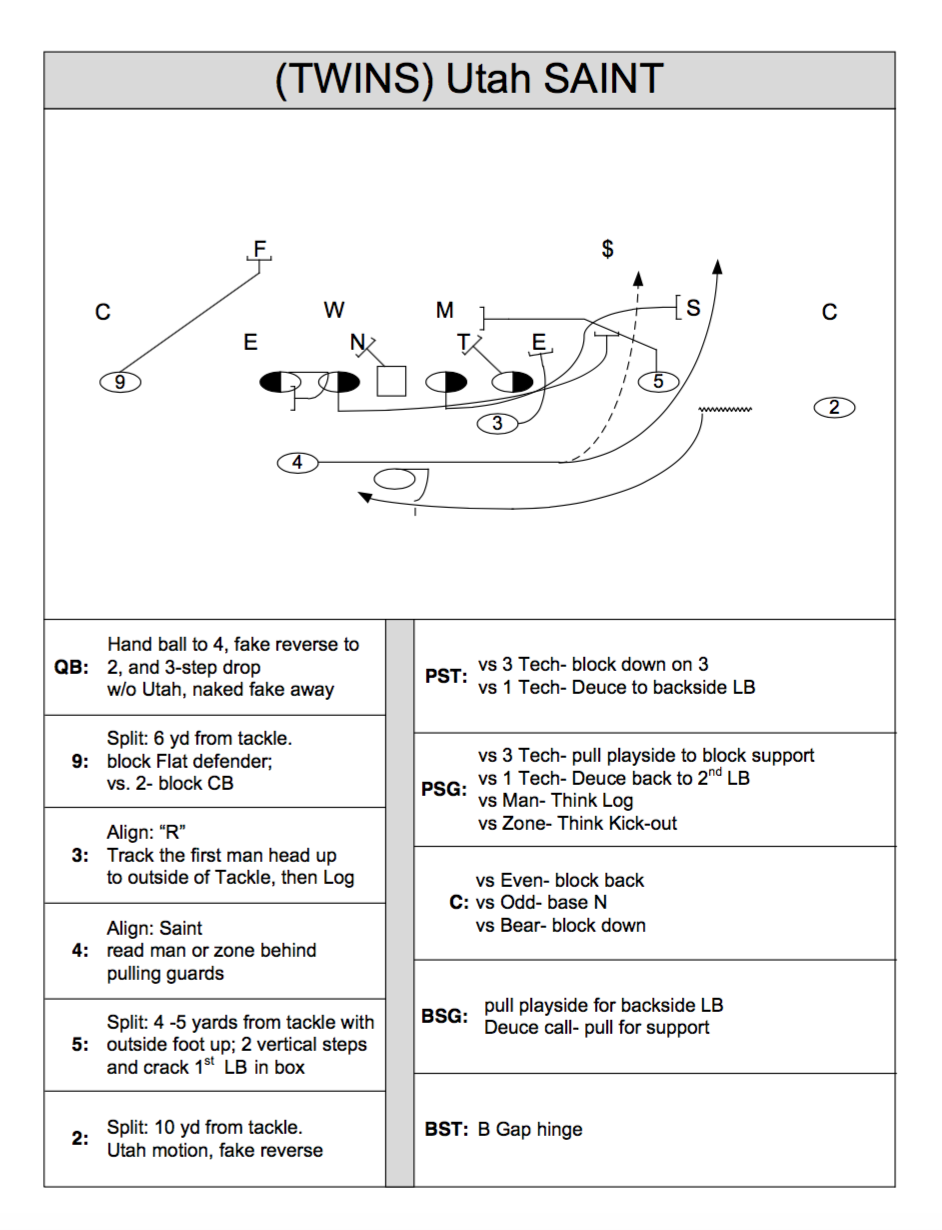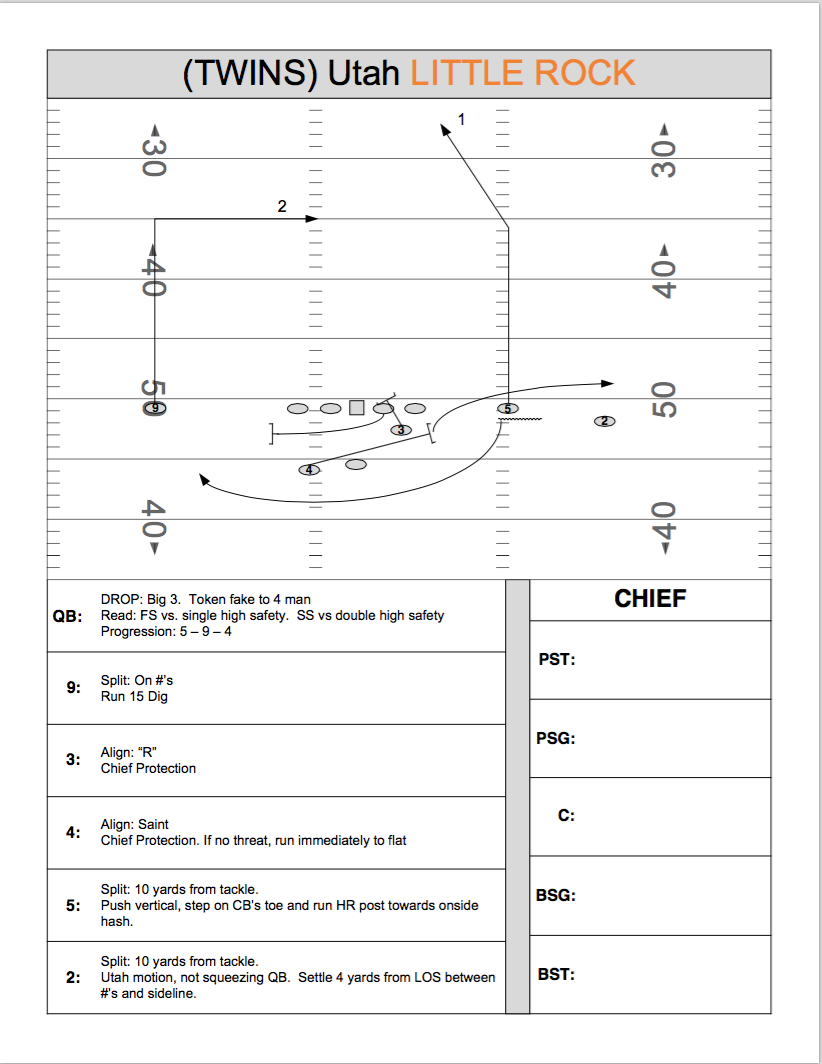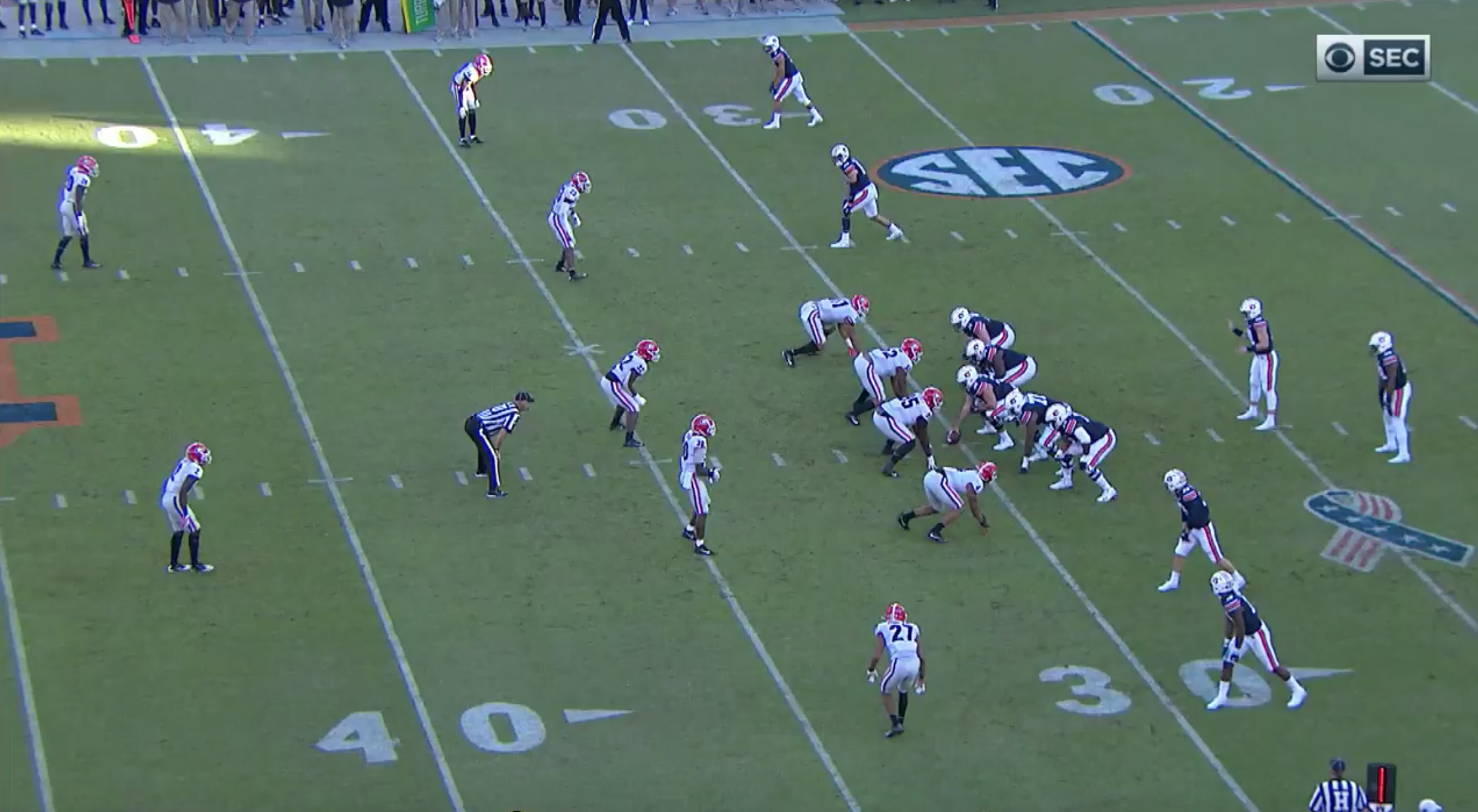by: Daniel House (@DanielHouseNFL)
When the Gophers (10-2) square off against Auburn (9-3) in the Outback Bowl, they will face another new challenge. This time, Minnesota must prepare for an SEC roster filled with NFL-caliber talent.
Auburn’s defense features one of the top front-seven units in the country. Coordinator Kevin Steele has done an excellent job of maximizing player potential. Offensively, head coach Gus Malzahn uses a heavy amount of motion, misdirection and play-action to keep defenses on their toes. The variety within his offense will make defensive discipline paramount for the Gophers.
In this piece, I unpacked a few themes you should be aware of as Minnesota prepares for the Outback Bowl on Jan. 1.
A Malzahn Classic: The Buck Sweep
One of the classic rushing plays in the Auburn playbook is the buck sweep. Gus Malzahn has turned the play into a staple of the Tigers’ system. I pulled the diagram below from the 2010 Auburn Playbook. “Saint” is a signal for the buck sweep and involves the running back’s alignment (five yards behind tackle). The play design below includes (Utah), which is a motion that essentially serves as a reverse. Malzahn loves to feature a high volume of misdirection, so he will often add many tweaks to a base play. During this year’s Ole Miss game (example below), a speed motion was used instead.
The main way to identify this play is to look for two pulling guards. The H-Back on the edge (labeled 3 in the play diagram above), cracks the defensive end. After that, the play side guard pulls to the edge and blocks the safety. The backside guard follows behind and seals the backside. Malzahn notes the importance of the guards staying tight when they pull because it limits the available space for defenders. In the play I pulled out below, the big key is the block by the “Y” wide receiver (labeled 5). He cracks the linebacker, which prevents him from coming underneath. During this play, the left tackle down blocks (to the center) and aims to the high side of the defensive tackle. The center blocks back and aims high against the nose tackle.
This play could have resulted in a very explosive outcome, but note how the backside guard was unable to block the backside linebacker quick enough. I also pulled a second clip to show how the buck sweep can be stopped. If the defensive end gets push, the entire timing of the pull is thrown off. It also creates space for defenders to work and fight through down blocks.
The Gophers may see a variation of this play and must be prepared for the wrinkles that could be attached to it. Malzahn will frequently mix zone and power schemes throughout the game.
His offense will feature Wildcat looks that often have different forms of misdirection attached to them.
It’s also worth keeping tabs on quarterback Bo Nix in the rushing game. He has been very effective off zone reads and designed runs. Nix had seven rushing touchdowns and does an excellent job of selling fakes.
Not only that, but Nix is very elusive in the pocket and can extend plays downfield. Nix completed 56 percent of his passes, while throwing for 2,366 yards, 15 touchdowns and six interceptions.
Minnesota has to be ready for how Auburn attaches play-action to many of these rushing concepts. After running out of a few looks, the Tigers have a deep playbook filled with passing schemes. For example, there is a play design called “Utah Little Rock,” which features Utah motion and a pulling guard. Based upon the formation and initial snap action, it looks like a buck sweep might be occurring. Instead, the play features a dig and deep post. If the defense bites on the running action, there will opportunities for big plays downfield.
When looking at old Tulsa and Auburn playbooks, there are more than 16 different formations Malzahn uses. His goal is to keep the defense guessing by making tweaks and subtle adjustments. With all of the misdirection included in this offense, defensive discipline will be one of the biggest keys. Malzahn’s philosophy has often centered around tempo and keeping opponents moving. He’s scaled back his no-huddle frequency, but still dashes it into the gameplan.
Malzahn also added a subtle form of tempo by using a “sugar huddle.” The huddle is very quick and hides the formation/personnel. When this is about to happen, you will notice a half circle huddle that’s about three yards away from the ball. The quarterback will clap his hands to move perimeter players out wide. Moments later, the offensive line turns and is nearly in position to snap the ball. The sugar huddle prevents defenses from adjusting to the personnel and results in quick snaps. Sometimes, it often leads to illegal substitution penalties because defenders are trying to get off the field. When a defense sees the sugar huddle, a surprise formation will almost always follow. At the start of the Auburn game, Malzahn hid tackle Prince Tega Wanogho and split him out as a receiver:
Auburn’s offense centers around the ground game and play-action. Running back JaTarvious “Boobee” Whitlow was the driving force behind the Tigers’ efficient rushing attack. Auburn ranks No. 47 nationally in Rushing Play Expected Points Added, according to College Football Data. Among players with at least 50 offensive snaps, Whitlow is the fourth-most valuable player (0.191 average EPA) in the Tigers’ offense, according to College Football Data. He’s a powerful runner, who has a knack for picking up extra yards after contact. Throughout the year, teams occasionally had to move players into the box for run support. The only time this didn’t occur was against Georgia. The Bulldogs elected to play with two-deep safeties to take away the deep play-action game.
I anticipate Minnesota will move players into the box and trust its cornerbacks to cover Auburn’s targets. Seth Williams is a big, physical receiver that thrives in vertical contested catch situations. Minnesota will need to play with sound technique to prevent Williams from getting position.
A Very Aggressive Defensive Scheme
When shifting to the defensive side of the ball, a few things stand out with Kevin Steele’s unit. Auburn is very aggressive and will throw a variety of fronts, blitzes and disguises your way. Whether it’s nickel/safety blitzes or stunts, an opponent is tested against this defensive front. Auburn ranks No. 12 in Defensive Expected Points Added (EPA) and No. 8 in opponent rushing play EPA, according to College Football Data.
The Tigers deploy a base 4-2-5 defense, but occasionally shift into dime packages. Earlier this year, they also used a 3-1-7 against LSU. In the clip below, Auburn used a dime package and linebacker Owen Pappoe blitzed. Pappoe, a true freshman, was one of the top recruits in the entire country. He stood out as a dynamic blitzer in this defensive system.
I also noticed sophomore safety Smoke Monday, who plays on a rotational basis. I’m fully convinced he has the chance to be a future first-round pick after he gains more playing time next year. In the clip below, Thomas is sent off a safety blitz and reaches the quarterback.
Junior K.J. Britt is a physical downhill linebacker and posted nine tackles for loss in 2019. Auburn also frequently rotated sophomore Zakoby McClain into the defense. He is a versatile, rangy and disruptive linebacker, who stood out in the Florida and Alabama games.
Auburn frequently uses man coverage and will often press receivers at the line of scrimmage. The biggest x-factor in this matchup is the Minnesota offensive line vs. Auburn’s front-seven. There is speed at all levels of the Tigers’ defense. We will see if Auburn plays more zone underneath to take away the Gophers’ intermediate game. My guess is they will continue to play a heavy amount of man coverage and use the versatility of their linebackers. During the Wisconsin game, the Gophers struggled to pick up blitzes and quarterback Tanner Morgan faced significant pressure. With the uncertain status of right tackle Daniel Faalele, the Gophers may be unable to use heavy personnel packages.
Senior defensive tackle Derrick Brown will be a top-10 selection in the 2020 NFL Draft. He is incredibly powerful against the run and gets frequent interior push as a pass rusher. When teams try to double him, he can shed/split and collapse the pocket. Brown is a special player and will require individual scheming.
From Minnesota’s perspective, I think stick routes and passes into the flat will be effective against an aggressive defense. Mesh concepts are also successful if teams are trying to cover man-to-man over the middle. When Auburn attempts to blitz, swing passes and screens could create big plays.
Minnesota may also consider stacking receivers and running vertical switch combinations against man coverage. The biggest area of emphasis has to center around getting the ball out quickly. The Gophers’ coaching staff may elect to provide maximum protection (if at all possible) to give quarterback Tanner Morgan enough time to work.
Along with Derrick Brown and a group of rangy linebackers, Auburn has a talented core on the defensive line. Edge rusher Marlon Davidson is a lengthy and powerful pass rusher, who accumulated 7.5 sacks this year. Prior to the Outback Bowl, defensive lineman Nick Coe declared for the draft. During his sophomore season, Coe led the team with seven sacks, but didn’t see much playing time in 2019.
When evaluating Auburn’s secondary, Jeremiah Dinson (leading tackler) is a dynamic player who can be flexed all over the field. I think Minnesota will try to attack cornerbacks Noah Igbinoghene and Roger McCreary (when he rotates in). With the amount of man coverage Auburn uses, there will be favorable matchups for the Gophers’ wide receivers. When playing the Tigers, Alabama had success with corner routes, slants, digs and vertical concepts. The Crimson Tide wide receivers won against man coverage and took advantage with explosive plays.
The biggest question is how the staff can creatively get the ball out quick. At the end of the day, pass protection will be one of the defining variables in the Outback Bowl.
Credit: Video- CBS Sports and ESPN (fair use)
Images: Courtesy of Auburn Playbook and Football X’s and O’s


